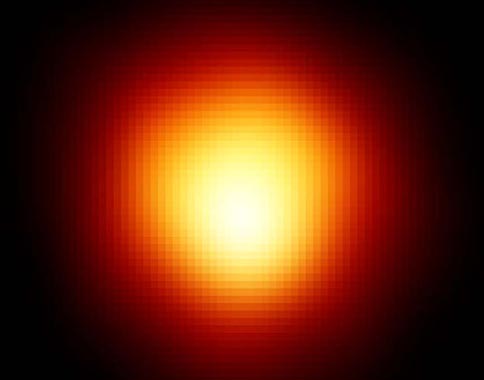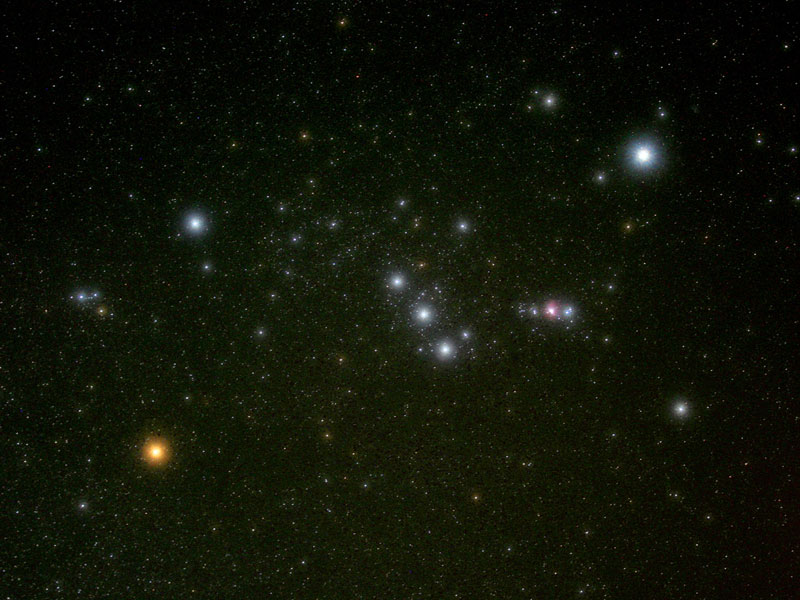|
|
|
#1 |
|
Avalon Senior Member
Join Date: Oct 2008
Location: Poland
Posts: 3,442
|
has been shrinking for 15 years scientists say...
Find the link in English, a job for Dantheman 
|
|
|

|
|
|
#2 |
|
Avalon Senior Member
Join Date: Sep 2008
Location: So. Cal. U.S.
Posts: 4,205
|
Actually judykott found it!!
Bye-bye, Betelgeuse? The nearby, well-known and very bright star may soon explode in a supernova, according to data released by U.C. Berkeley researchers Tuesday. The red giant Betelgeuse, once so large it would reach out to Jupiter's orbit if placed in our own solar system, has shrunk by 15 percent over the past decade in a half, although it's just as bright as it's ever been. Betelgeuse, a star so large its shape can be seen through the Hubble Space Telescope. "To see this change is very striking," said retired Berkeley physics professor Charles Townes, who won the 1964 Nobel Prize for inventing the laser. "We will be watching it carefully over the next few years to see if it will keep contracting or will go back up in size." Betelgeuse, whose name derives from Arabic, is easily visible in the constellation Orion. It gave Michael Keaton's character his name in the movie "Beetlejuice" and was the home system of Galactic President Zaphod Beeblebrox in "The Hitchhiker's Guide to the Galaxy." Red giant stars are thought to have short, complicated and violent lifespans. Lasting at most a few million years, they quickly burn out their hydrogen fuel and then switch to helium, carbon and other elements in a series of partial collapses, refuelings and restarts. Betelgeuse, which is thought to be reaching the end of its lifespan, may be experiencing one of those collapses as it switches from one element to another as nuclear-fusion fuel. "We do not know why the star is shrinking," said Townes' Berkeley colleague Edward Wishnow. "Considering all that we know about galaxies and the distant universe, there are still lots of things we don't know about stars, including what happens as red giants near the ends of their lives." Eventually, the huge star may become a nesting doll of elements, with a mixed iron-nickel core surrounded by onion-like layers of silicon, oxygen, neon, carbon, helium and hydrogen. As the iron fuel runs out, it may explode into a supernova, blasting newly created elements out into the universe and leaving behind a small, incredibly dense neutron star. All the heavier elements in the universe — including all the oxygen, carbon and iron in your own body — were created in such a way. It's possible we're observing the beginning of Betelgeuse's final collapse now. If so, the star, which is 600 light-years away, will already have exploded — and we'll soon be in for a spectacular, and perfectly safe, interstellar fireworks show. More info on these sites http://blogs.nature.com/news/thegrea...t_to_blow.html http://www.berkeley.edu/news/media/r..._betelim.shtml __________________ |
|
|

|
|
|
#3 |
|
Avalon Senior Member
Join Date: Sep 2008
Location: So. Cal. U.S.
Posts: 4,205
|
 Betelgeuse Credit: A. Dupree (CfA), R. Gilliland (STScI), FOC, HST, NASA Explanation: Here is the first direct picture of the surface of a star other than our Sun. Taken by the Hubble Space Telescope in 1995, the atmosphere of Betelgeuse reveals some unexpected features, including a large bright hotspot visible below the center. Betelgeuse (sounds like "beetle juice") is a red supergiant star about 600 light years distant, easily recognizable from its brightness and reddish color in the constellation of Orion. While Betelgeuse is cooler than the Sun, it is more massive and over 1000 times larger. If placed at the center of our Solar System, it would extend past the orbit of Jupiter. Betelgeuse is nearing the end of its life and will become a supernova in a perhaps a few tens of millions of years. |
|
|

|
|
|
#4 |
|
Avalon Senior Member
Join Date: Sep 2008
Location: So. Cal. U.S.
Posts: 4,205
|
 Credit & Copyright: John Gauvreau Explanation: Orion, the Hunter, is one of the most easily recognizable constellations in planet Earth's night sky. But Orion's stars and nebulas don't look quite as colorful to the eye as they do in this lovely camera image, taken early last month at the Black Forest Star Party from Cherry Springs State Park in Pennsylvania, USA. In this single exposure, cool red giant Betelgeuse takes on a yellowish tint as the brightest star at the far left. Otherwise Orion's hot blue stars are numerous, with supergiant Rigel balancing Betelgeuse at the upper right, Bellatrix at the upper left, and Saiph at the lower right. Lined up in Orion's belt (bottom to top) are Alnitak, Alnilam, and Mintaka all about 1,500 light-years away, born of the constellation's well studied interstellar clouds. And if the middle "star" of Orion's sword looks reddish and fuzzy to you, it should. It's the stellar nursery known as the Great Nebula of Orion. |
|
|

|
|
|
#5 |
|
Avalon Senior Member
Join Date: Oct 2008
Location: Poland
Posts: 3,442
|
yes, I read about it after I had posted here...
|
|
|

|
 |
«
Previous Thread
|
Next Thread
»
|
|
All times are GMT. The time now is 09:32 AM.



 Linear Mode
Linear Mode

